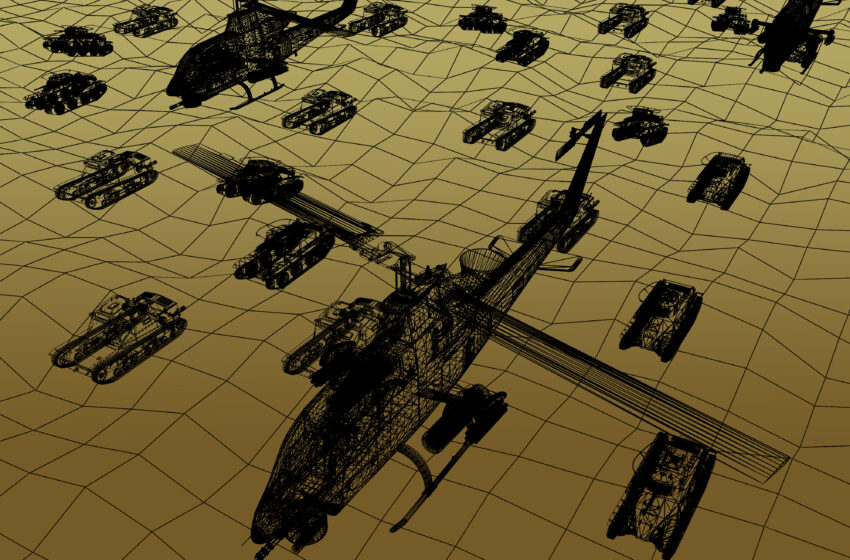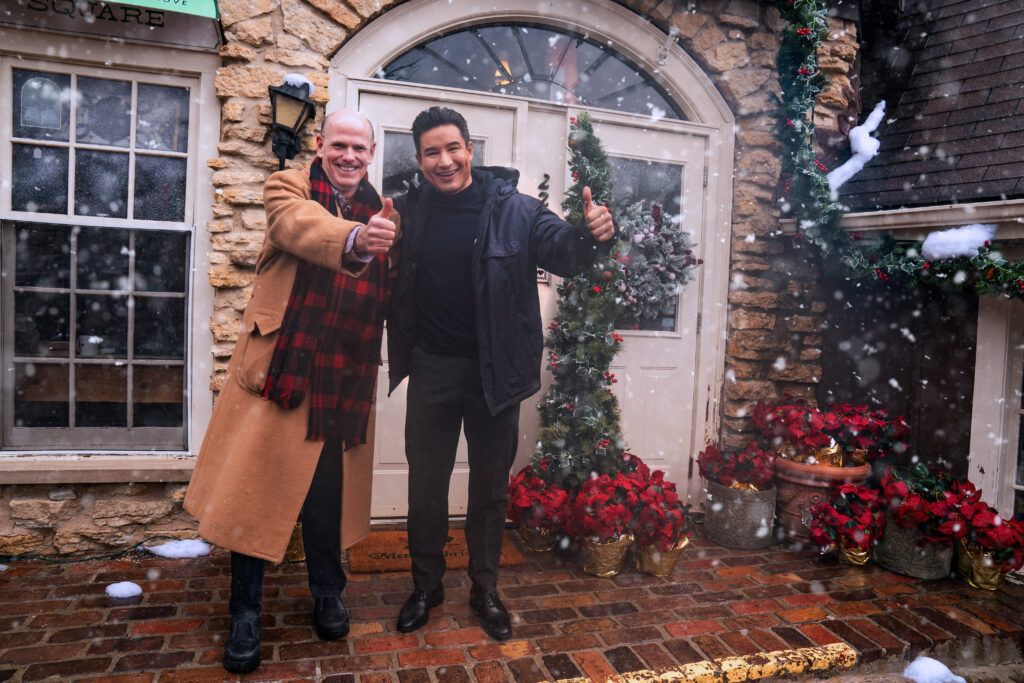Streamlining Business With The Army
- October 24, 2023

Army Applications Laboratory: Accelerating Military Innovation Through Collaboration
For a company, working with the military can involve navigating murky waters and dealing with the large amounts of red tape associated with submitting a proposal to a government agency. Some startups and small companies are hesitant to work with the US Department of Defense (DOD) due to the Federal Acquisition Regulation and other issues that slow payments. The lengthy process to submit a proposal is daunting, and leaders of some smaller companies may assume that contracts usually go to the “big guys”—the companies that already have relationships with the military.
That was the conundrum the US Army faced up until five years ago. Army officials knew they had problems that needed solutions in a timelier fashion than traditional government protocol allowed. They knew they needed to find a way to reclaim the lead when it came to quickly evolving technology. The Army wanted to work with innovative companies and find a way to modernize and remain on the cutting edge of the ever-changing landscape of today’s military needs. They knew problems could be solved much faster by commercial entities that were already working in several arenas, including technology.
The win-win solution came in 2018 with the creation of the Army Applications Laboratory (AAL), an organization under the Army Futures Command (AFC) with the mission to address those needs. “We solve Army problems,” AAL declared at South By Southwest 2023. “Army Applications Laboratory is Army Futures Command’s innovation unit and a partner for industry, the Army, and government organizations. We discover practices and processes to speed capability development and turn cutting-edge ideas into real, relevant solutions for Soldiers.”
The reality of that mission is an organization that provides new ways for the military and public industry to work together effectively and efficiently, allowing companies with innovative technology and products to scale and solve problems for the military in key focus areas. The AAL helps these companies navigate doing business with the US Army and finds ways to creatively apply their products, research, and services to meet the critical needs of the military.
In short, the AAL has developed a blended business model that allows the Army to remove unnecessary constraints and work with commercial industry companies that might not understand how the needs of the military could relate to their products and technologies.
Austin’s reputation as an innovation hub led to its selection as the base for the organization. Part of the Army Futures Command based in Austin, AAL is headquartered at the Capital Factory, a venture capital firm and accelerator.
Several Texas companies have reached out and are working with AAL. Currently AAL projects come from companies in 38 states, and outreach for submissions is nationwide. Last June, AAL received the Small Business Innovation Research Award at DOD Small Business Week.
Texas CEO Magazine recently spoke with Dr. Casey Perley, executive director of AAL. Perley has also served as a deputy director and as the first director of insights for AAL. Her resume includes a PhD in molecular genetics and microbiology and a postdoctoral fellowship at the US Army Medical Research Institute of Infectious Diseases.
The concept of AAL is very forward thinking and seems to be very successful. You have recently taken the role of executive director. What do you see as the mission for the organization?
Our mission is to get the best technology into the hands of a war fighter. In order to do that, you have to get to the best idea. Sometimes it comes from companies that are already working with us, and sometimes it doesn’t. So we have to find ways to reduce the barriers of entry for nontraditional small businesses and make working with the DOD a viable process for them. Only then can the DOD have the ability to access their technology and expertise to solve our critical problems.
Can you give us an example of how that partnership might work?
Our H2FMS (Holistic Health and Fitness Management System) program is a good example of problem-solving. The Army needed to monitor soldiers in a holistic manner—to monitor not just the things like how fast they could run, how strong they were, but things like how they were sleeping, what they were eating, and how they were cognitively as well as their emotional and mental health. They wanted to get a whole picture of the individual, but they also realized that they needed to be able to gather data and information in a way that wasn’t burdensome to the soldier. The data had to be accessible to different groups of people without being intrusive.
Thinking of this in a new way, we found that what we needed sounded a lot like the information needed for training and managing top, high-performance athletes and that there was already software in use by professional teams and colleges for similar purposes. We were just going to have to tweak it to meet our needs.
We went out to industry and found three companies that have professional athlete management software, and then we gave them access to three Army units—a paratrooper unit, a basic training unit, and an MI (military intelligence) battalion—in order to figure out how to have the best technology and system to meet the Army’s needs. Now we have a great pilot program in place.
So, the challenge was how to transition a commercial application to meet the needs of the soldier. If we had tried to develop that software, we would never have had it in time to meet the needs of the US Army. It would not have been as good, and it would have cost a lot more. By leveraging great talent and expertise of the commercial industry, we can open up a whole new stream of income for businesses that may never have considered working with the DOD. The Army, in return, gets the technology we need much quicker and in a much more mature stage of development that meets our needs so it’s a really great mutually beneficial relationship.
As you begin your tenure as executive director, what is your vision for AAL?
I was interested in becoming the executive director because we don’t want to win the next war, we would like to prevent it through technological overmatch. I would like to emphasize problems that fill critical capability gaps for the Army, problems that have the ability to transform how we are going to fight in 2030 and 2040. I would like to continue to find more ways to target the business community to solve our more immediate problems and speed up contract time. I am very interested in speeding up the time that companies get access and the solutions they develop to actually get to the soldiers in the field.
What are the areas AAL is currently focusing on?
AAL works on solutions for problems involving power and energy, robotics, tactical artificial intelligence (AI), contested logistics, human performance, security, operations, and intelligence. Right now, our main focus areas are robotics, logistics, and power. With that said, if there is an unforeseen need in another area, say cybersecurity, we’re not going to say no to helping find ways to solve that problem. If it is a critical need, we will always look at it.
One of the things General James Rainey, commander of AFC, is interested in is how to integrate humans and machines and the ways we can use robots while allowing humans to be in charge of the critical decisions that need to be made. One of the things they love about our RCV (robotic combat vehicle) project is that instead of bringing in one company, we brought in 10 companies and exposed them to all of the stakeholders and end users and asked them to identify the things they are best at that can help solve this problem. At the end of the day, six companies were selected, and all of those technologies are complimentary. So rather than having one winner, we have six best-in-their-area companies. In addition to being a really interesting technology in relation to using more machines on the battlefield, it also became a great way to incentivize small businesses to work together.
Would you explain the process for companies or individuals looking to work with AAL?
First, I need to explain how we identify a project. No one can better explain or identify a problem than those closest to it, so we listen to everyone from senior leaders across all areas of the Army to privates in the motor pool. We listen to the professionals who have a short-term capability gap that they believe nontraditional industries can help them solve. Before we take on any project, we conduct in-depth market research. We look at the state of technology in the commercial industry and across the government. We check to see if commercial technology is robust in that area. Another consideration is companies that might have the solution, large or small. And are they located in the United States?
After we decide to take on the problem, we look at funding. Are we going to use the SPARTN (Special Program Awards for Required Technology) program or the funds we have for targeted viable products? We have a lot of freedom to look at the possibilities for projects, and there is a lot of internal decision-making behind the scenes that goes into the decision-making process. We are fortunate that we don’t have to tell exactly what we are going to do with the funds until the year of execution. That allows us to tackle problems that come up at the last minute and need immediate solutions—the problems no one has anticipated. That is really powerful and gives us incredible flexibility.
Once the decision has been made to go forward, that’s when the industry learns about the opportunity. We advertise it on SAM.gov and call for submissions on the website. In addition, we advertise on LinkedIn, Twitter, our networks established through Capital Factory, and our targeted email list. We also work with venture capitalists, chambers of commerce, incubators, aggregators, and accelerators, and we ask them to push out the call for submissions to their networks.
Companies then have the opportunity to call and ask questions and to clarify some of the more technical aspects of what we are asking for and what problem we are specifically addressing. We utilize webinars, explainer videos, and other papers depending on the complexity of the project. From there, companies submit a proposal. Our goal is to inform them within two to three weeks after their selection and have them on contract within 30 to 60 days after the event.
That seems very fast for a government project and contract.
There are three areas we address that speed up the process: speed to capital, access, and transparency. While the government will never move capital at the speed of commercial industry, we can get it done in 60 to 90 days. That is because we have an incredible, dedicated team that has worked with us from the inception of the project and understands the pain points small businesses face. They guide and help them with all of the necessary documents so we can have a quick turnaround on submissions. We are also committed to providing transparency to these companies, and we try our best to keep them informed on a timely basis so they can make choices about what is strategically best for their companies. And lastly, we are committed to improving access. We give them access and consistent feedback within the units that are using their technologies.
The SPARTN process we use for submissions was developed specifically for AAL’s business model and is structured to speed up the process and overcome hurdles that might impede the progress of finding solutions to immediate problems and the critical needs of the US Army. It works very well.
How many projects have you completed so far, and what is
the success rate to date?
We have completed 15 projects, and we have a transition rate, which means that we have gone on to work with other parts of the DOD, on 47 percent of those projects. Of those, we have also transitioned 11 technologies, which shows that our projects can be used collaboratively to solve other problems as well as the original application. We are on track for a number of successful transitions this year as well.
WHAT MAKES SPARTN DIFFERENT?
According to the Army Applications Laboratory (AAL) website, Special Program Awards for Required Technology (SPARTN) unites US Army Small Business Innovation Research (SBIR) funding and AAL’s business model to create a program that moves—and pays—at the speed of business. SPARTN helps US-based small businesses advance their technology while supporting US Army modernization priorities.
- Problems released through SPARTN are tied to the US Army’s critical needs and to other focused modernization efforts.
- SPARTN strives for a faster contracting speed, with the goal of having companies on contract as soon as possible versus up to 180 days.
- It has the ability to connect with US Army stakeholders and end users (soldiers) for deeper insight into the problem.
- There is potential for millions of dollars in total value contracts to build a concept or prototype related to a specific problem.
- Acquisition teams are included early with the goal of easing the transition and building new technology into recurring budgets.
AAL Texas Success Stories
ARM Automation
ARM is a 30-year-old machine design and robotic systems integrator located just west of Austin. The 28-person company builds custom robotic systems for industries such as the automotive and transportation sector, medical services, and entertainment industry.
AAL Project:
TECHNOLOGY
ARM Automation is developing an end-to-end autoloader solution
for the Army’s Extended Range Cannon Artillery (ERCA) that involves moving already-prepared munitions from a storage area to the
gun barrel.
COMMERCIALIZATION
ARM has extensive commercial business in which it can apply technology developed using SBIR. Customers include Tesla, Epson, Rockwell (Allen-Bradley), Siemens, Bosch, Kollmorgen, and Yaskawa.
Apptronik
A 42-person robotics company located in Austin, Apptronik intends to empower the next generation of robotics to improve the health, comfort, safety, and productivity of humans. The company’s robots are developed from mechatronics and control software contributions that can live and work with humans to make their lives safer, more productive, and easier, enabling advanced researchers to use the same components as in leading robotic programs.
AAL Project:
TECHNOLOGY
The company is currently developing a robotic arm that is attached to military vehicles to help load and unload ammunition. The arm will ultimately be capable of fully autonomous movement and can easily be used manually by soldiers under degraded conditions.
COMMERCIALIZATION
Apptronik has numerous commercial customers including Lockheed Martin, NASA, SuitX, and the Office of Naval Research. A major American investor has expressed enthusiasm about the ability of this technology, if successful, to have a substantial impact on commercial logistics.
Hypergiant
Headquartered in Austin, Hypergiant is a developer of an enterprise AI software company designed to focus on accelerating the intelligence transformation. The company’s software services include developing AI technologies and implementing a variety of services including computer vision, human-robot interaction, machine learning, autonomous navigation systems, natural language processing, and predictive modeling, enabling corporations to tackle their changing business priorities and drive toward growth.
AAL Project:
PROBLEM
A hardware-to-human ratio problem makes the employment of robotic combat vehicles (RCV) infeasible without an increased ability to accurately and rapidly sustain the RCV fleet. The US Army must develop best-in-breed technology that can translate sensor data to actionable facts, in real time, for logisticians, maneuver leaders, maintainers, and mechanics.
PROJECT STATUS
This is currently about a quarter of the way through the 24-month period of performance (POP) on the Phase 2 SBIR. Hypergiant is part of a larger cohort working on the Robotic Combat Vehicle Sustainment project developed during Phase 1. The project has completed month five of the POP and continues to analyze the data to support solution build. By developing a user interface toward integration with other cohort members, AAL continues to coordinate with contractors to build potential transitions to the commercial markets for companies.





